Middle School Musical
Fall 2019
This season I worked with middle school kids from sixth to eighth grade. I wanted them to feel needed and included, responsible and depended upon. So the team could experience this inclusion, they did not just paint constructed pieces, they constructed the smaller set pieces, and designed and produced visually appealing portions of the set.
What The Students Produced
For the beds within the opening and final scenes, I could have described a vision and tell them how to do it step by step; but that would be cumbersome. Besides, everybody works at different speeds of comprehension and just doing. Instead, to alleviate that burden from myself, I made a model for students to investigate and build replicas on their own. Students had to observe and analyze the model through piece size and juxtapositions. I made sure that students knew how to use tools so that no one student lost an eye, finger or any other body part using power tools. So they could successfully construct the mini-bed frames; I demonstrated how to use the chop saw, drill for pilot holes, apply fasteners and construct joints.
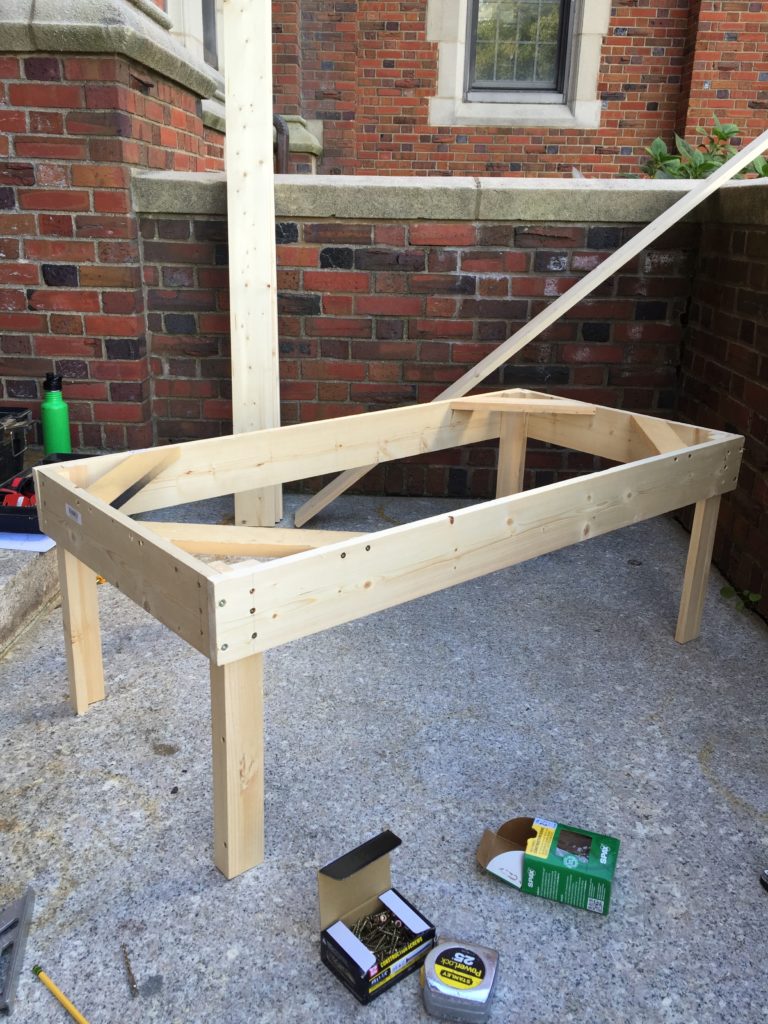
Students quickly worked through making the other two beds needed for Wendy and the two brothers—they exceeded my timeline and quality expectations. The two teams made a quick tackle constructing the frames and legs, but waited upon instruction for the corner braces. I demonstrated the miter cut—kids had to ask themselves before each cut: “Where is my thumb?”— and how to secure the piece. Below illustrates the two student-constructed frames and the model. We did add the top for a mattress, and a fake headboard and footboard produced with foam board insulation to keep the beds light in weight since middle schoolers would be changing the sets.
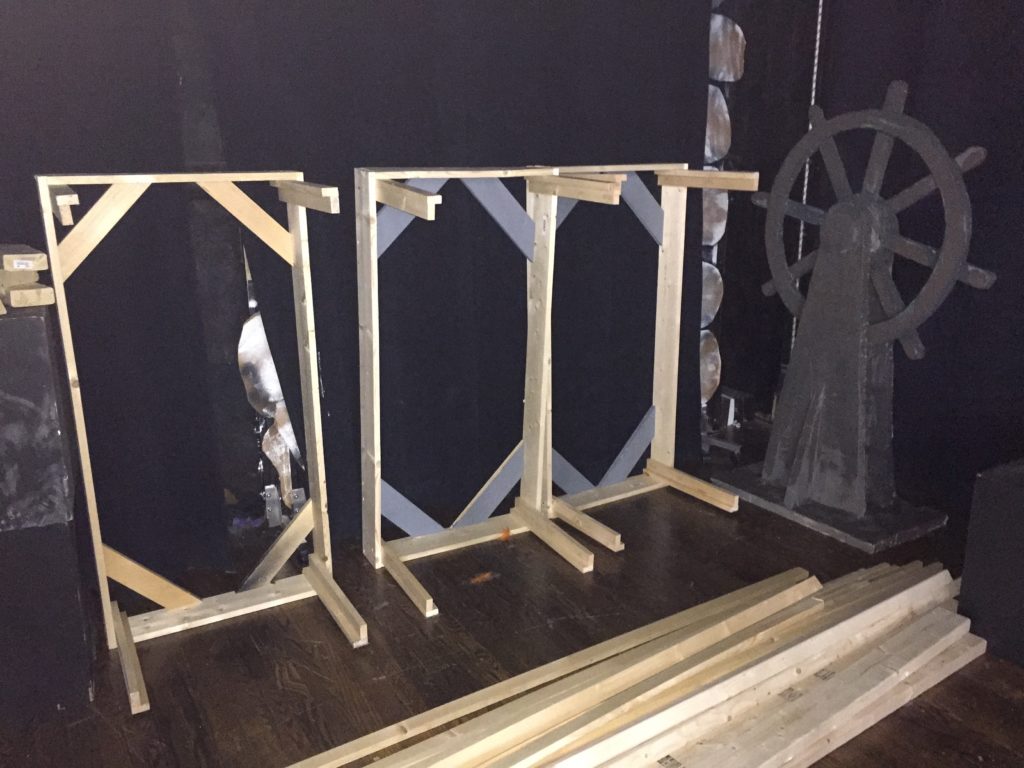
The ship’s wheel. In addition to the bed frames, the far right of the image displays a ship’s wheel. As a guideline, a team of three received a detailed plan I drew outlining the parts and measurements. They used: a scroll saw for metal to cut 1-inch thick insulation foam board; hot glue; packaging tape and paint to construct the ship’s wheel. They were required to be economically considerate with the materials as in the old adage of waste not, want not. Here is the kicking bonus—the students constructed it accurately and solved problems so that an actor could secure it to the floor with one foot and spin the wheel. The wheel actually spins!
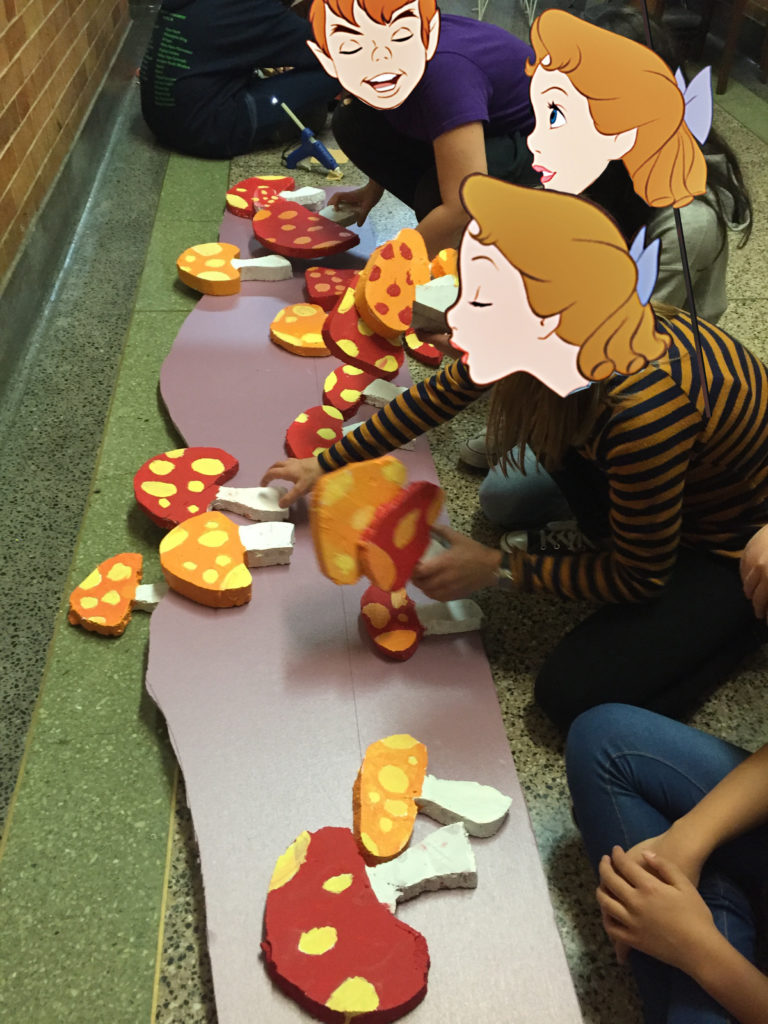
Students also worked on a lot of the other elements based on the overall art direction.
A mushroom field to skin the front of the platforms. They designed close to three dozen mushrooms, considered the layout and then constructed two skins each four feet long and roughly two feet high. These facades would cover the raised platforms to create a mushroom hill on either side of a roped-railed bridge.
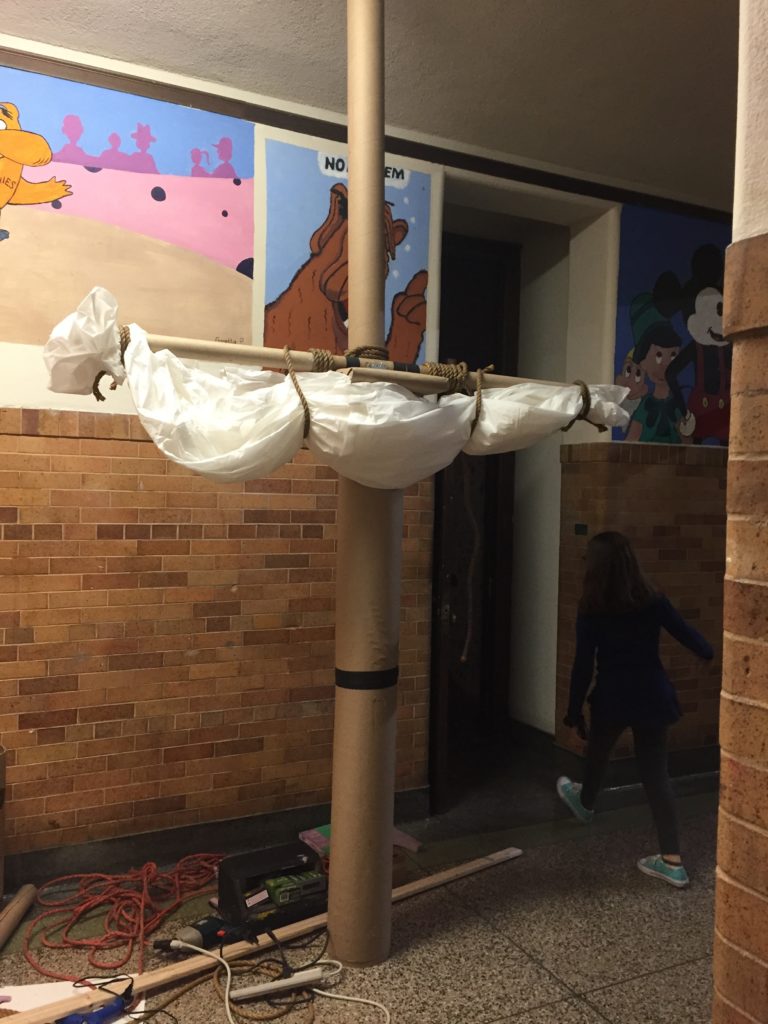
A ship mast. I provided some found cardboard tubes, rope, old canvas, tape and consultation as we improvised a large mast close to 10 feet tall. A high school art student made the pirate flag and set it on the mast to appear frozen in a gust of wind.
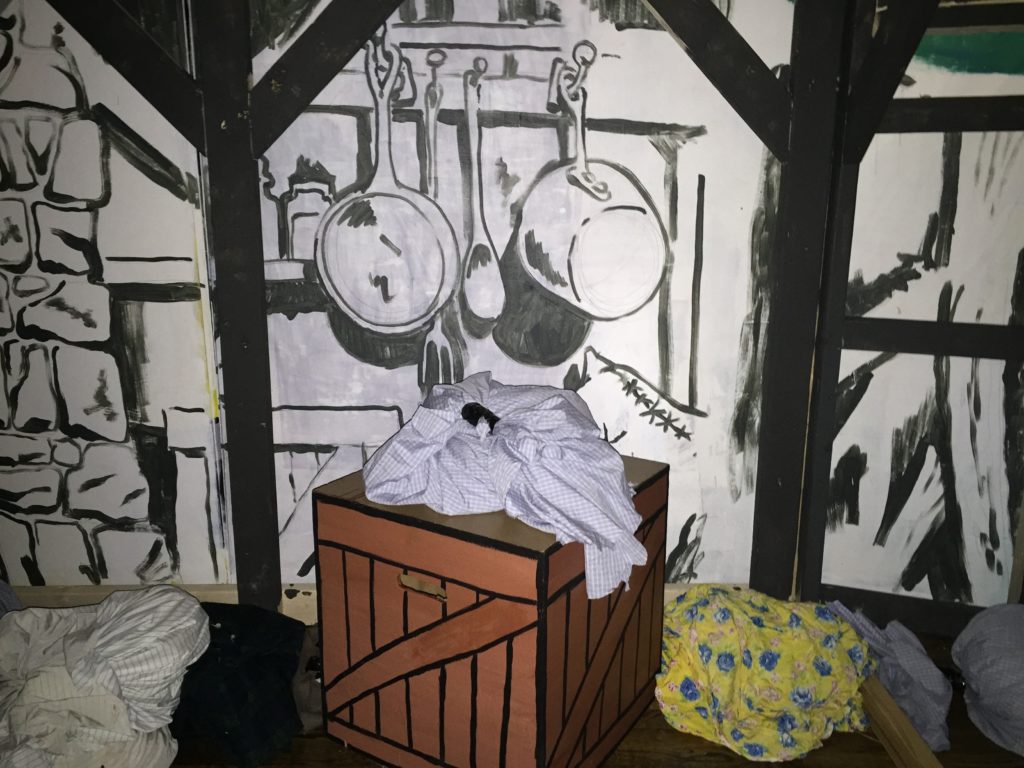
Crates. Six stage boxes were constructed by a previous production crew for a show in a past season. Based on a drawing, the crew painted them to resemble shipping crates.
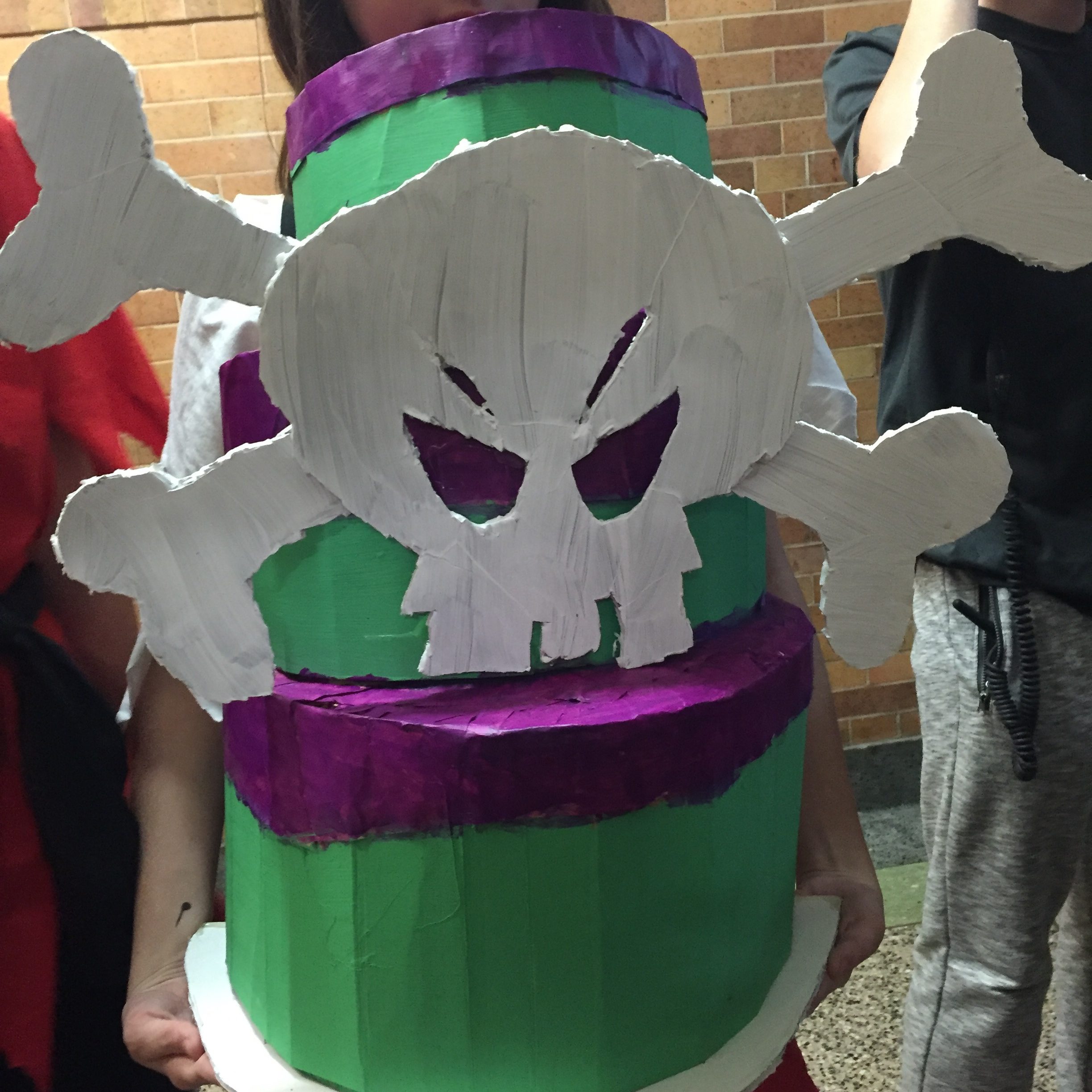
The poisoned cake. I provided cardboard and asked students how could they make a life-like cake. After their exploration they noticed that a round cake made of cardboard was not going to be easy. I guided them how to bend cardboard into a curve by cutting shallow grooves, and to create tabs for footing for glue surfaces. They decided to paint it green and purple to match Peter Pan and to suggest that the cake was poisoned. A student inspired by the flag also made the skull as an added cue of its toxic taste.
Cannons. Students created two flat cannons from the foam boards. They were designed to appear pointing to the audience and flanked the stage.
The Stage
The director wanted a stepped platform to function as an island hill and an underground residence. The director wanted the winged lower platforms rotated toward the audience and accessible by both ends with step ladders. Because the platforms needed to be sturdy and safe for the performers, the construction required materials and a build that would be too heavy for the students. This was my challenge to create.
I have had experience building by renovating my home as well as relatives. However, I still researched the safety standards as well as guidelines to make a standard platform that could be striked for future performances. This being my initial stage build, my primary concern was a sturdy construction built for safety. Additionally, I thoroughly inspected the set after each tech-week rehearsal and before the performances. Like my previous stage production with Seussical, I forgot to record the final stage production but I did manage to remember to document some of the progress.
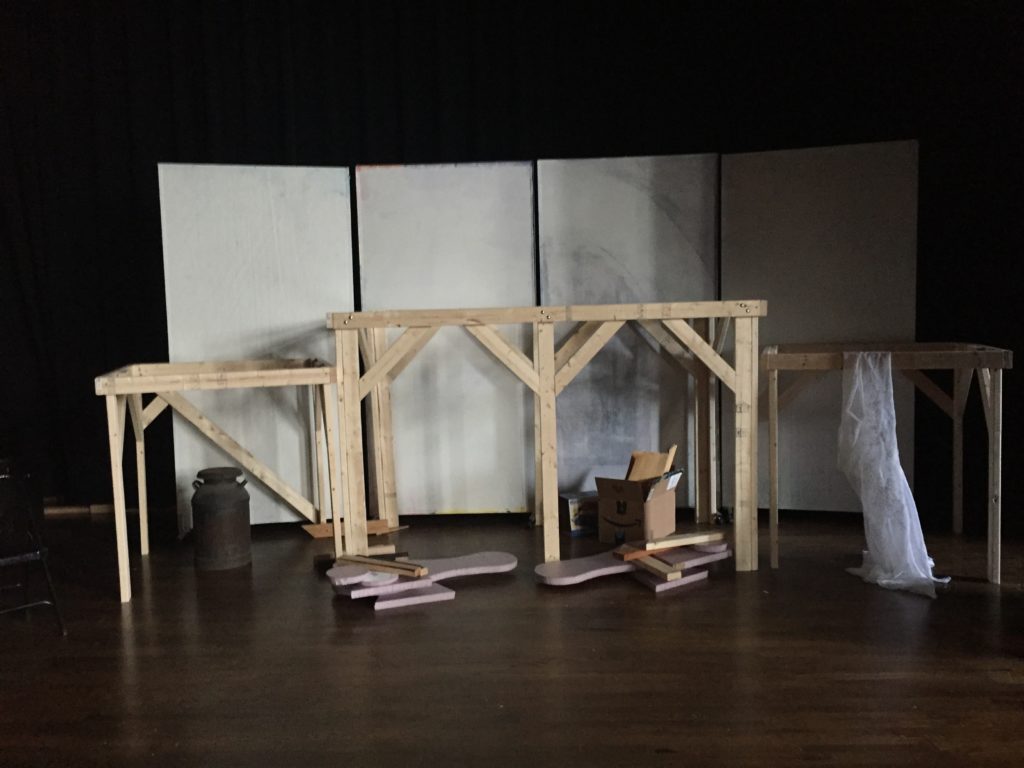
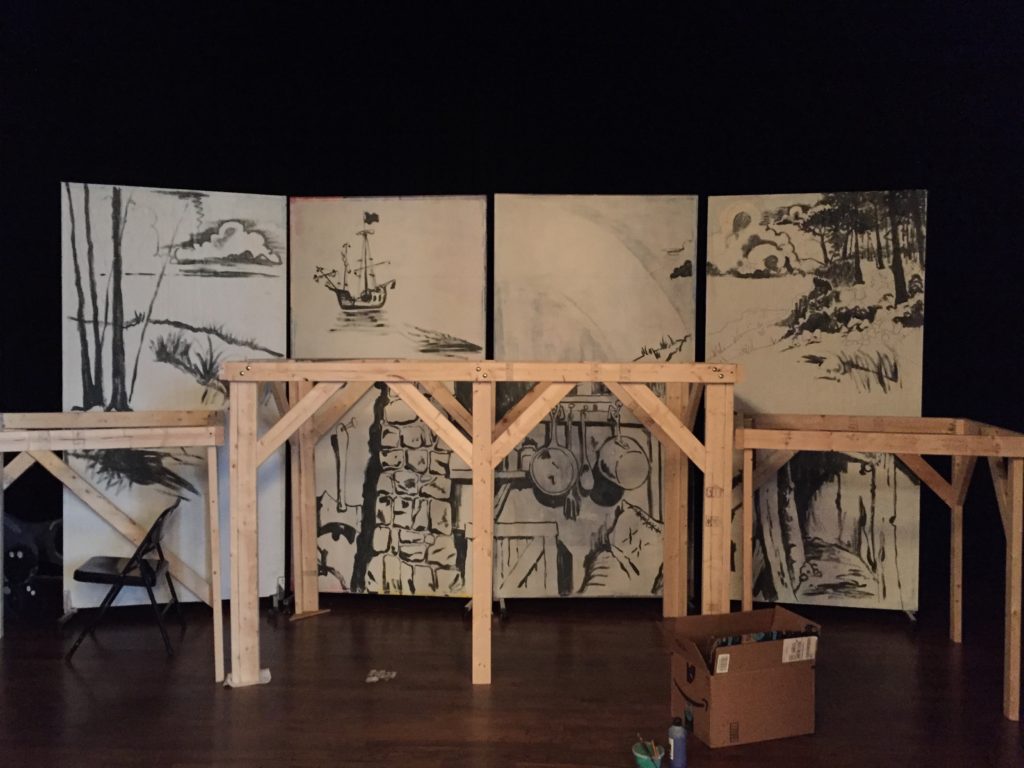
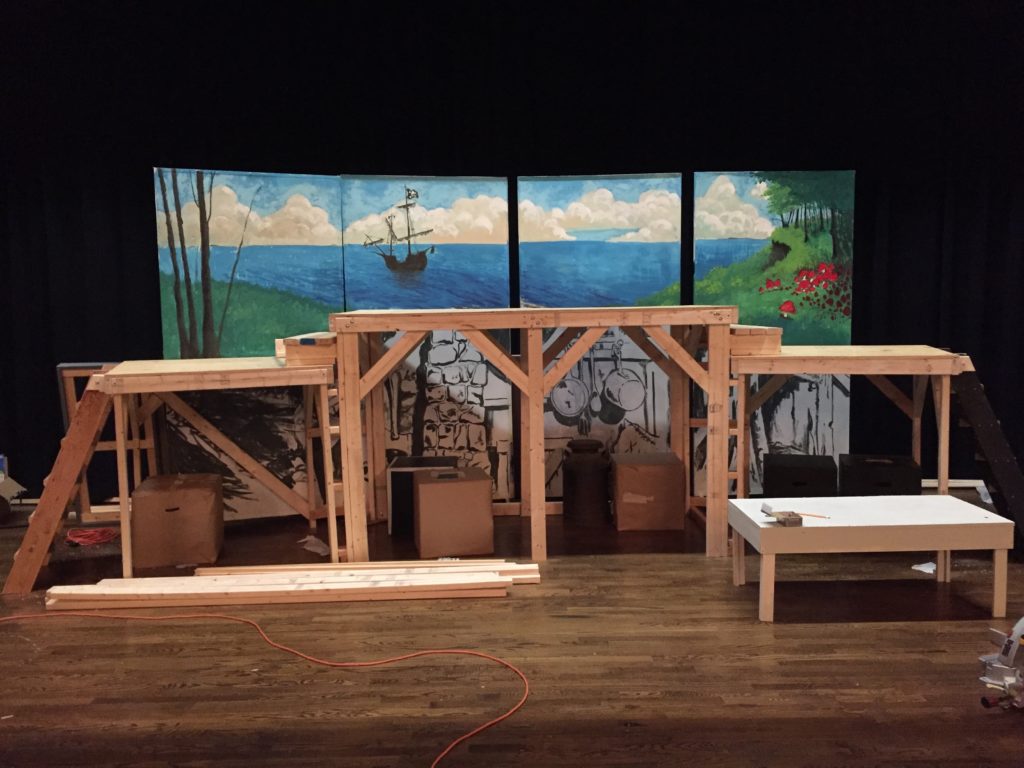
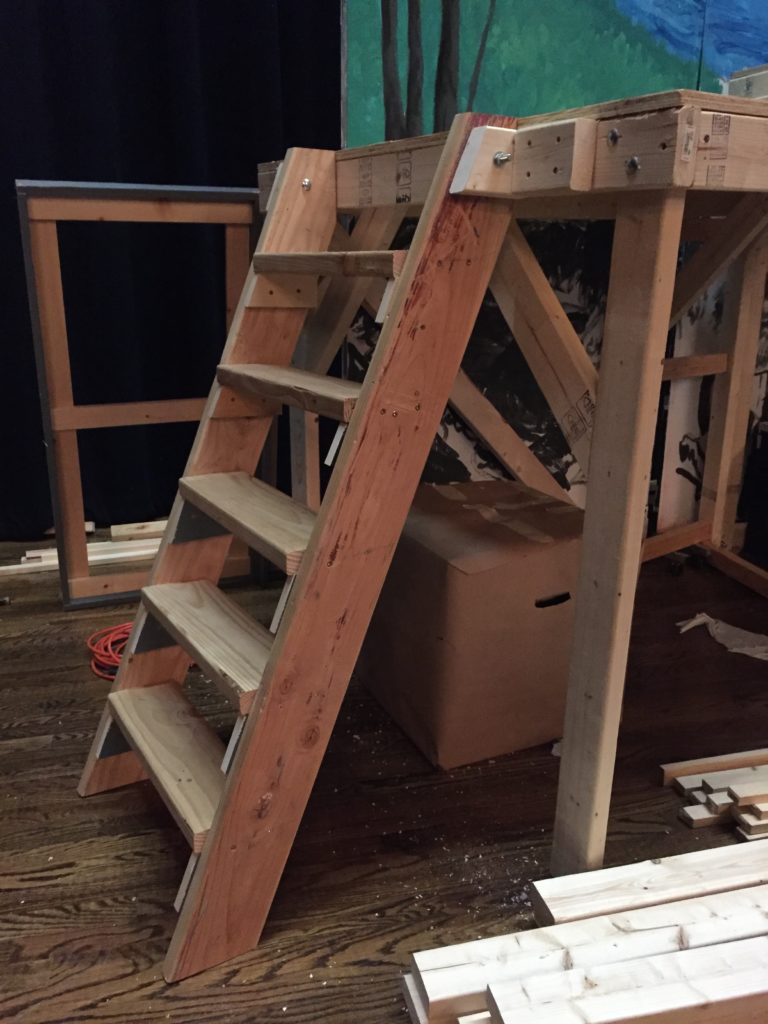
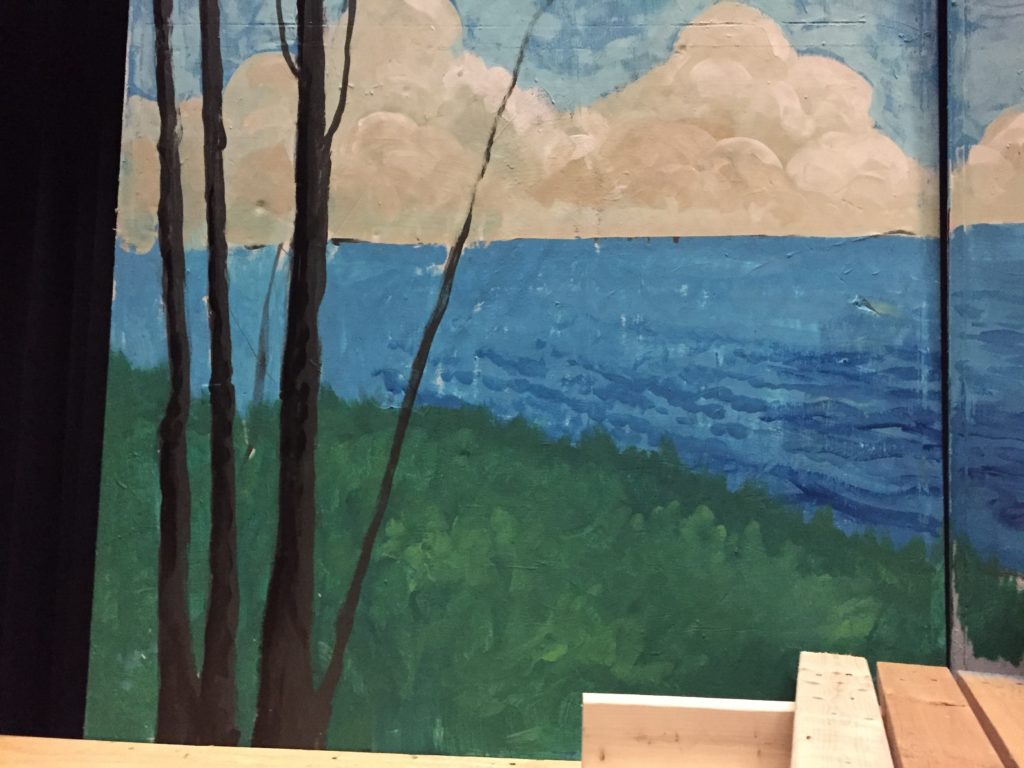
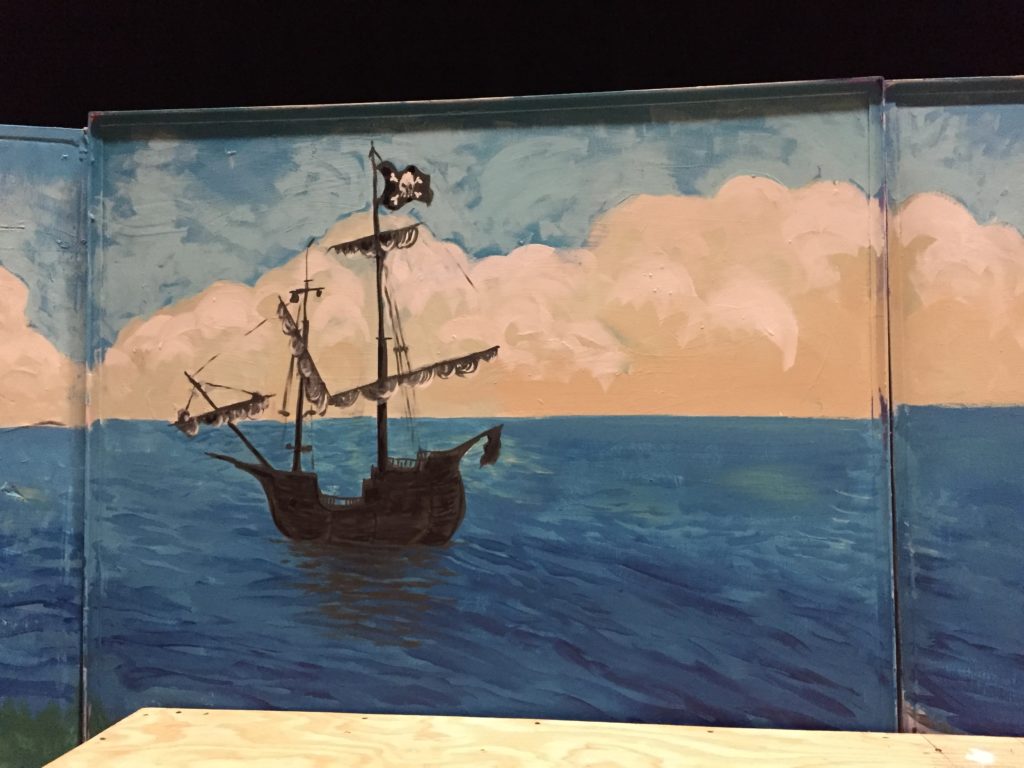
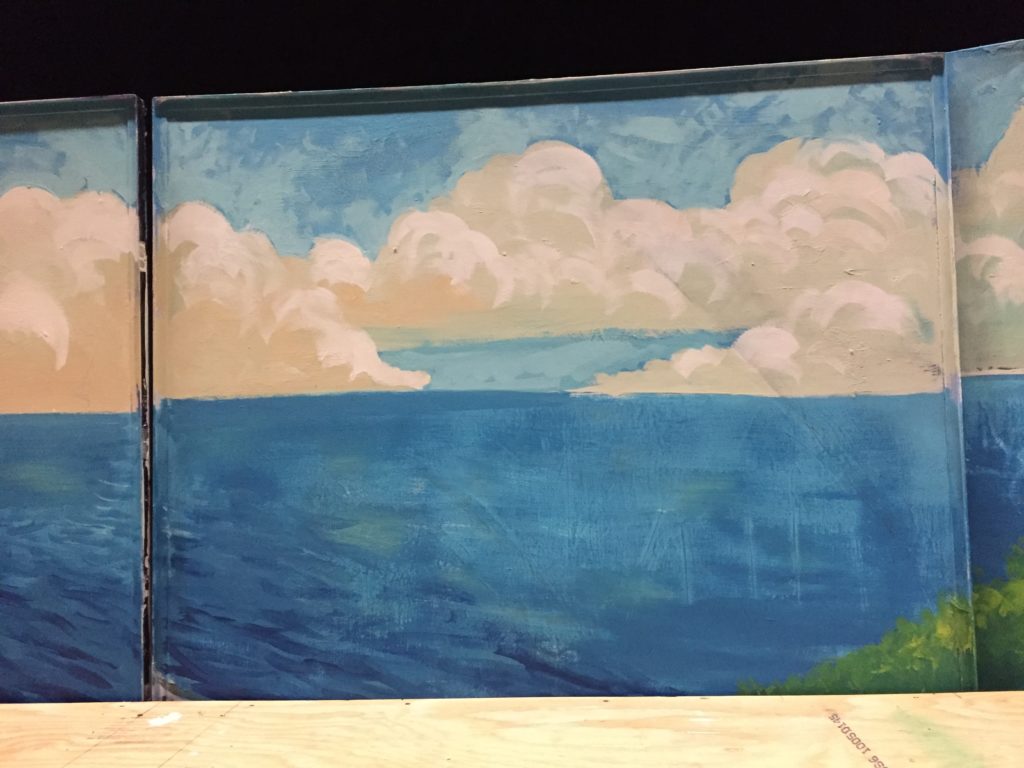
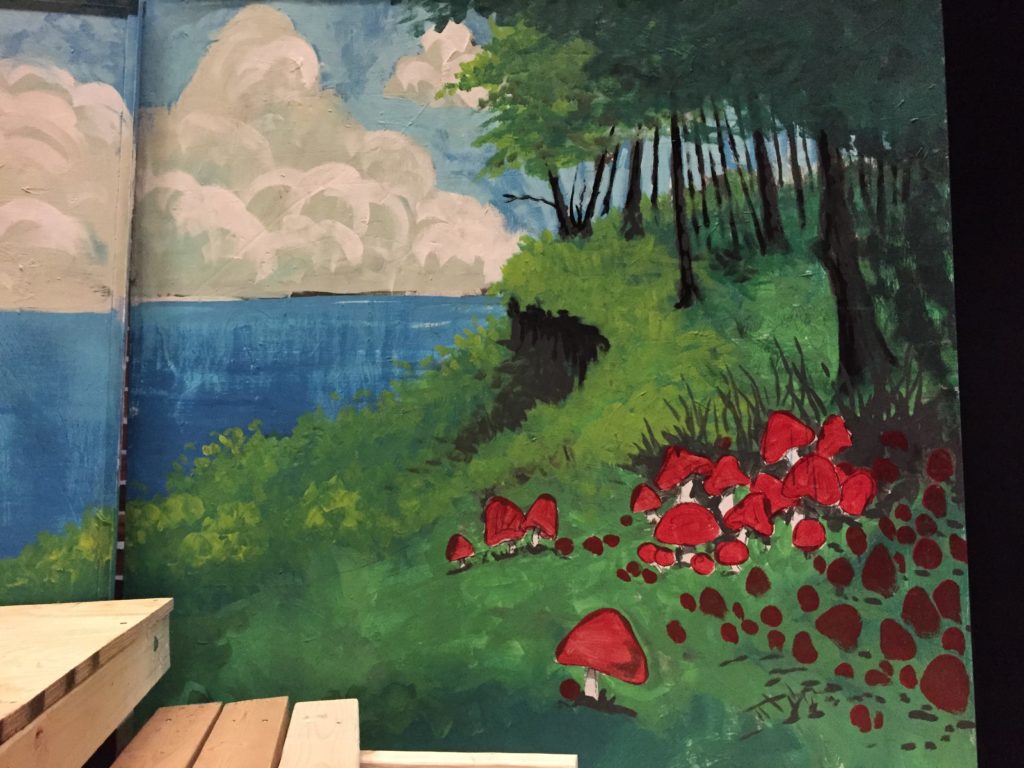
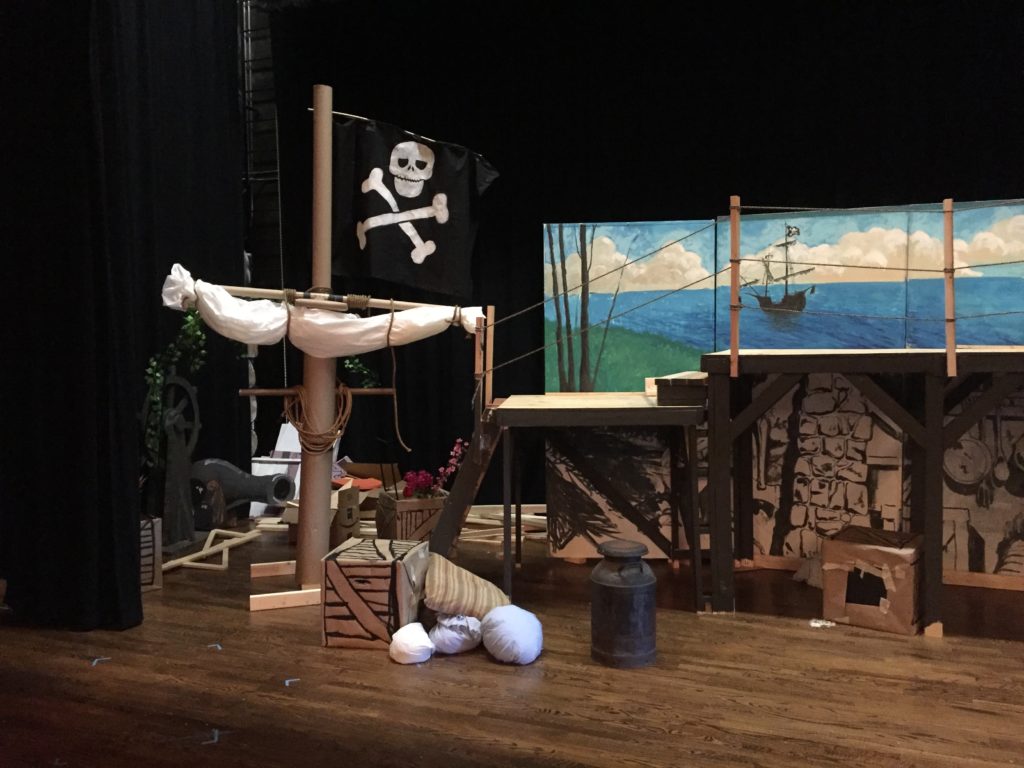
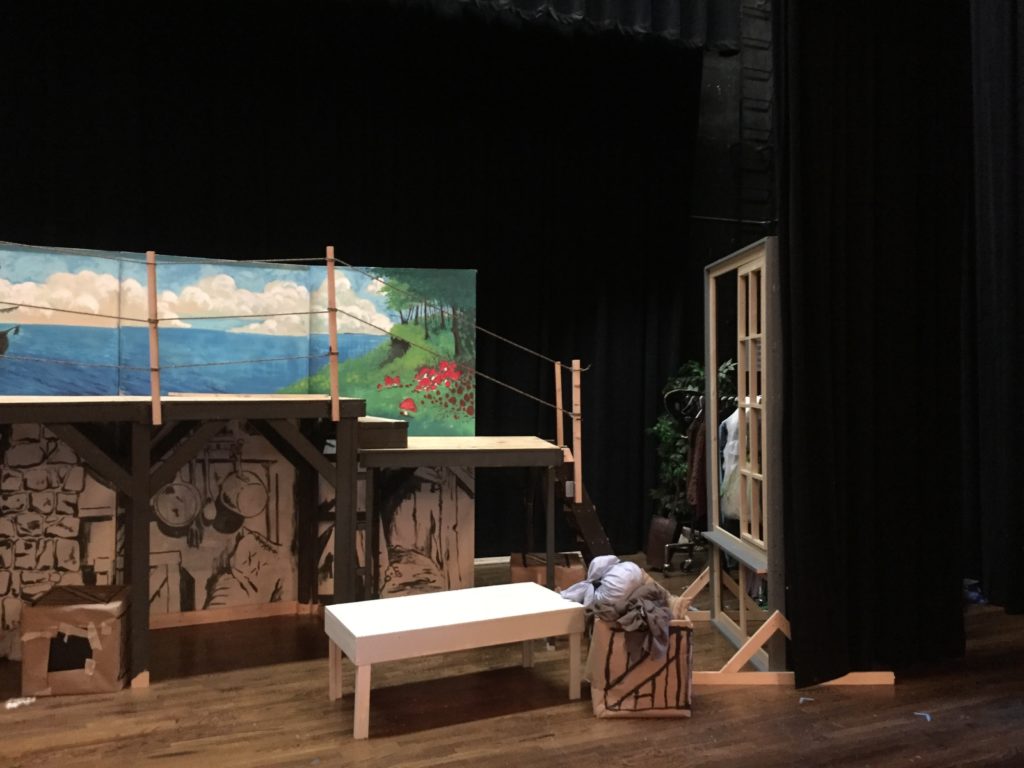
Though the set is not fancy, for my first it was a great personal success; and, according to audience members and teachers, was a considerable production step from previous shows. This comment and the students’ performance were rewards for the effort. At the end of the production, students took mushrooms as souvenirs. One student wanted to keep the ships wheel, but we felt it could be used for future productions. Then, I learned that what goes up must come down. I experienced the tear down all by myself.
